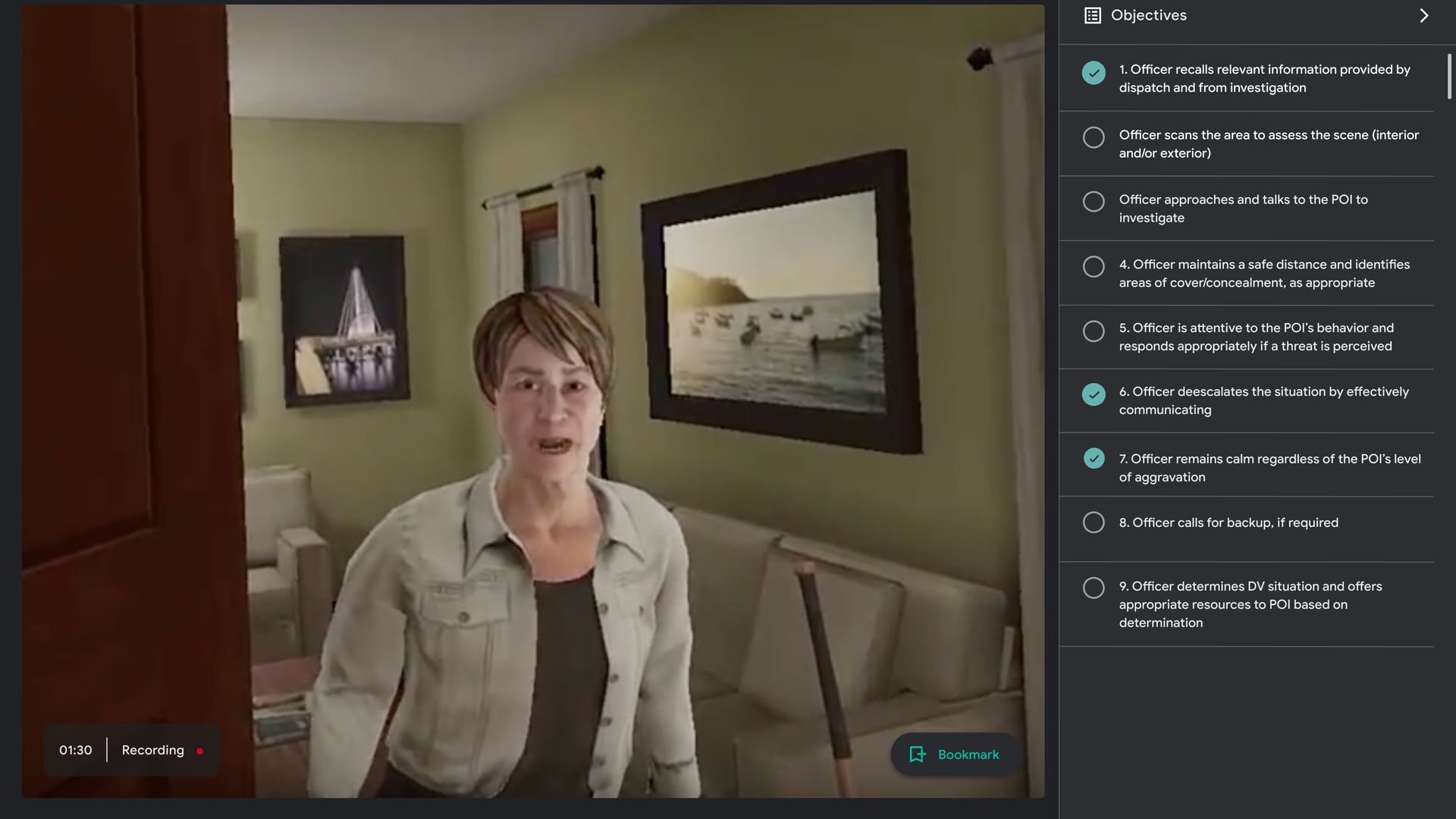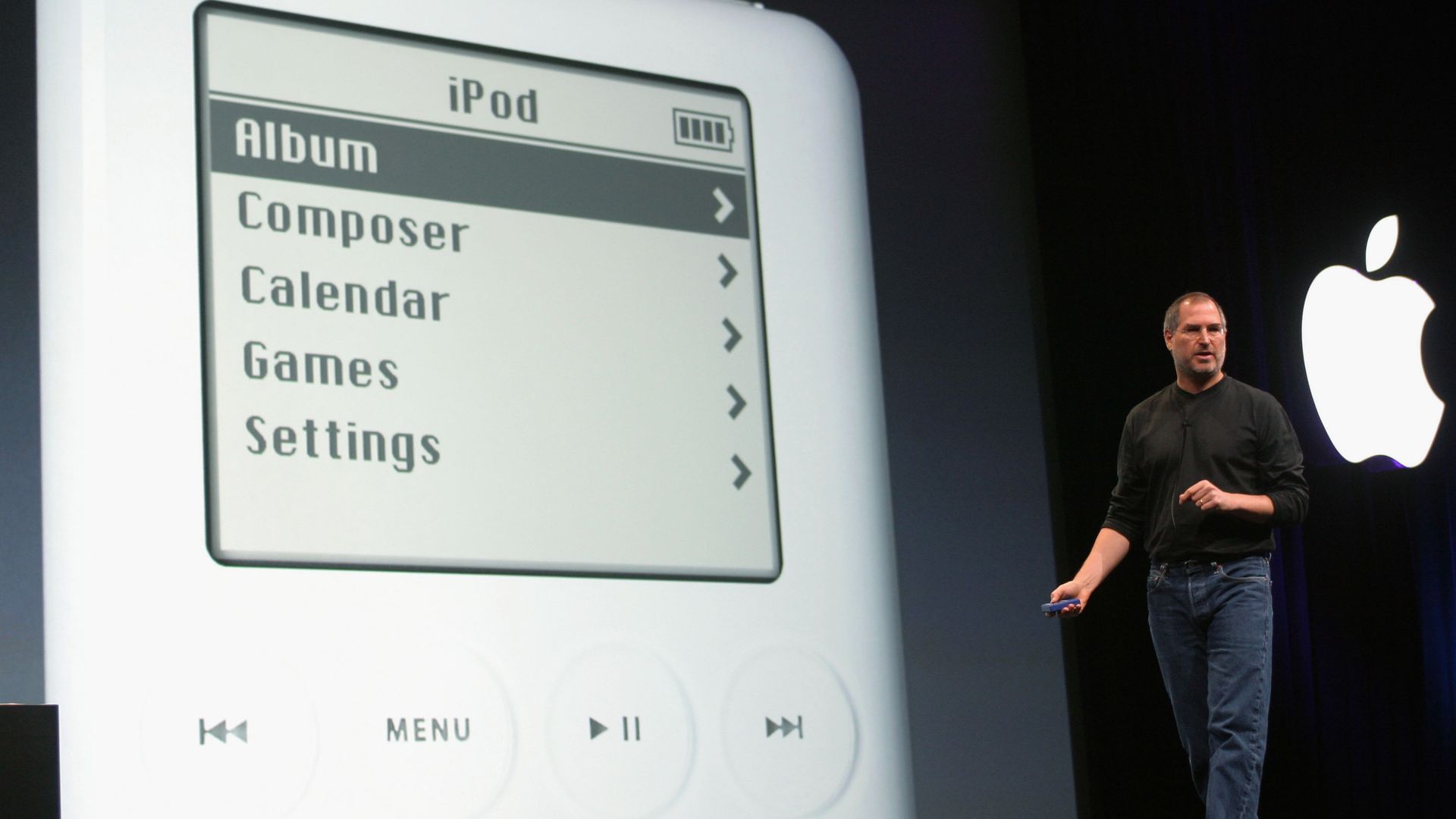| | | | | | | Presented By VMware | | | | Axios Future | | By Bryan Walsh ·Oct 27, 2021 | | Welcome to Axios Future, where I just experienced the miracle of flight for the first time since the pandemic began. - I also experienced the miracle of the ground delay.
If you haven't subscribed, get on board. Today's Smart Brevity count: 1,652 words or about 6.5 minutes. | | | | | | 1 big thing: Public health messaging lessons for the next pandemic |  | | | Illustration: Megan Robinson/Axios | | | | "Be first, be right, be credible" is the mantra of public health experts in a crisis. It's difficult to argue that the health community has regularly managed to be any of those three during COVID-19. Why it matters: A pandemic isn't just a medical emergency — it's also a communications emergency. The U.S. public health establishment, hamstrung by bad data and political interference, has struggled with the latter. - It may be too late to repair the bad messaging that has marred the COVID-19 response, but better communication strategies will be needed for the inevitable next pandemic.
Driving the news: An FDA expert panel on Tuesday endorsed Pfizer's COVID-19 vaccine for 5- to 11-year-olds, with 17 votes in favor and one member abstaining. - The decision is a significant step toward the end of the pandemic in the U.S., as the last major age group is now on track to become eligible to be vaccinated. But it will present yet another communications challenge for the public health establishment.
- Members of the advisory board argued over the potential risk-benefit balance of vaccinating kids, given their relatively low threat from COVID-19 and the small increase in the risk of myocarditis from vaccination, as well as the question of whether vaccine mandates would follow.
Be smart: This is how science actually works — theories are argued about in academic conferences and the scientific literature, and advanced or abandoned as new data and results come in. - The difference during the pandemic is that all of it has happened in real time and in full view of an often confused and irate public, with politicians hovering in the background.
Details: Early in the pandemic many officials actively discouraged wearing masks, even as evidence was gathering about their effectiveness, only to do a 180-degree turn later. What's next: To improve the response for the next pandemic, public health officials will need to upgrade how they measure uncertainty as well as how they communicate it. - Fully reliable data on the pandemic's spread in the U.S. has been spotty from the start — so much so that the best source in the early months was the volunteer effort of the COVID Tracking Project. But the CDC's new Center for Forecasting and Outbreak Analytics should help provide better data tracking in the future.
- Instead of constantly trying to communicate risk in an absolute way — and risk being caught out when the disease changes — epidemiologists could take a page from engineers, who regularly update their picture as new data and tools become available.
- Most of all, public health experts need to be honest about what they don't know, straightforward about the fact that guidance in a disease emergency is always conditional, and clear about the data that drives that guidance.
Read the rest |     | | | | | | 2. Google's Jigsaw introduces VR simulator for police de-escalation |  | | | Trainer's learning interface, shown during a domestic dispute scenario, allows instructors to evaluate police officers in virtual scenarios with different contexts. Credit: Jigsaw | | | | Jigsaw, a technology incubator within Google, is rolling out a VR simulation platform designed to help train law enforcement on de-escalation techniques. Why it matters: De-escalation training is increasingly popular but it's often costly. Jigsaw's VR product Trainer could help provide adaptable de-escalation practice on a tighter budget. What's happening: De-escalation training aims to help police officers defuse a situation during a stop or investigation without resorting to violence by purposefully bringing down the level of confrontation, says Christy Lopez, who co-leads Georgetown Law School's Program on Innovative Policing. How it works: I was given a demo of Trainer by Kevin Rabsatt, lead software engineer at Jigsaw and the chief developer of Trainer, and his team at Jigsaw's offices in New York. - In Trainer's VR space, I played the role of a police officer dispatched to the site of a reported domestic disturbance. I could hear the crackle of the dispatcher's voice in my ear, and knocked on the door of the home.
- I was greeted by an upset woman, and had to talk her down, mindful to keep my tone calm and not crowd her in the virtual space — two techniques that are a key part of de-escalation.
- In a normal Trainer exercise, instructors can use the platform to check whether an officer hit assigned objectives, including maintaining a safe distance and remaining calm.
Our thought bubble: Even with the graphics, which are closer to a video game than real life, the experience felt stressful and unpredictable. - "When you use the technology, every time it's reacting to you and your movements, and so each time those moments are different," says Robin Engel, director of the IACP/UC Center for Police Research and Policy.
- "That flexibility is what makes it feel like a real-life scenario."
Read the rest |     | | | | | | 3. Nearly a third of new code on GitHub is written with AI help |  | | | Illustration: Shoshana Gordon/Axios | | | | The open-source software developer GitHub says as much as 30% of newly written code on its network is being done with the help of the company's AI programming tool Copilot. Why it matters: Copilot can look at code written by a human programmer and suggest further lines or alternative code, eliminating some of the repetitive labor that goes into coding. How it works: Copilot is built on the OpenAI Codex algorithm, which was trained on terabytes of openly available source code and can translate human language into programming language. It serves as a more sophisticated autocomplete tool for programmers. - "We hear a lot from our users that their coding practices have changed using Copilot," says Oege de Moor, VP of GitHub Next, the team rolling out Copilot. "Overall, they're able to become much more productive in their coding."
Between the lines: The company will announce at its GitHub Universe conference today that it will be rolling out Copilot support for all popular programming languages, including Java. - "This is going to help bring this technology to a much broader audience," says de Moor, adding that it is part of GitHub's effort to "make programming accessible to the next 200 million developers."
- De Moor also notes that Copilot has proven sticky with the community's base — 50% of the developers who have tried the product since its launch in July have kept using it.
Read the rest |     | | | | | | A message from VMware | | Transforming remote collaboration at Moderna | | |  | | | | The VMware Anywhere Workspace helped Moderna team members continue collaborating on vaccine development, even while working remotely. "VMware helps us be a productive and efficient company. If we can save just one day, we may be able to save more lives," says Stéphane Bancel, CEO of Moderna. | | | | | | 4. Why we struggle to count gun crime |  | | | Illustration: Shoshana Gordon/Axios | | | | America's crime statistics, especially around guns, are a mess — and they could soon be worse. Why it matters: Without dependable, uniform numbers about the state of violent crime in the U.S., it's difficult to know what to do about it. What's happening: Last week, the Department of Justice released the annual National Crime Victimization Survey (NCVS), which along with September's Uniform Crime Report (UCR) from the FBI, is one of the two main sources of national data about crime in the U.S. - But the two reports tell different stories — while the FBI found that homicides increased by nearly 30% in 2020 and violent crime overall by 5%, the NCVS reported total violent victimization fell by 22%.
How it works: The UCR is a collection of crime statistics recorded by many — though not all — of the 18,000 police agencies scattered around the country, while the NCVS is a survey of crime victims. Yes, but: While it's not unusual for the two reports to provide different conclusions, the discrepancies for 2020 are particularly stark, and indicative of larger problems with the way the U.S. tracks shootings and violent crime. What's next: The FBI is in the midst of switching to a new crime data system called NIBRS that will allow police agencies to submit more detailed information about each incident. Read the Axios deep dive on gun violence |     | | | | | | 5. Worthy of your time | | Gene therapy is coming of age (Lauren Gravitz — Scientific American) - The dream of the '90s — fixing or replacing a disease-causing gene or changing its activity — may finally be here.
We're in the Moneyball 3.0 era. Here's what it means for live sports (Alex Woodie — Datanami) - Forget walk rates and fly ball percentages — deep learning is about to open up new insights into sports strategy.
Revisiting "The 4-Hour Workweek" (Cal Newport — The New Yorker) - The 2007 Tim Ferriss manifesto may have heralded changes in how we're approaching work in the postish-pandemic era.
Chicago poised to create one of the nation's largest 'guaranteed basic income' programs (Mark Guarino — Washington Post) - The movement to guaranteeing income takes a step closer to reality with a bold experiment in Chicago.
|     | | | | | | 6. 1 more thing: Getting the iPod wrong |  | | | Steve Jobs at an early iPod event. Photo: Kim Kulish/Corbis via Getty Images | | | | Apple's very first iPod was released 20 years ago this month. Why it matters: Some of the very mixed reaction at the time shows how difficult it can be to recognize a groundbreaking tech product when it first appears. Background: Then-Apple CEO Steve Jobs announced the iPod on Oct. 23, 2001, at an event that teased "the unveiling of a breakthrough digital device." What they said: Given that Apple would go onto sell more than 400 million iPods, much of the initial critical reaction was surprisingly negative. - One poster on Slashdot, at the time the dominant tech messaging board, said: "No wireless. Less space than a nomad. Lame."
- An analyst gave the iPod qualified praise, but compared it negatively to Sony's MP3 players, arguing Apple lacked "the richness of Sony's product offerings."
The bottom line: Predicting the future is hard — even when you're holding it in your hand. |     | | | | | | A message from VMware | | Transforming remote collaboration at Moderna | | |  | | | | The VMware Anywhere Workspace helped Moderna team members continue collaborating on vaccine development, even while working remotely. "VMware helps us be a productive and efficient company. If we can save just one day, we may be able to save more lives," says Stéphane Bancel, CEO of Moderna. | | |  | | It'll help you deliver employee communications more effectively. | | | | | | Axios thanks our partners for supporting our newsletters. If you're interested in advertising, learn more here.
Sponsorship has no influence on editorial content. Axios, 3100 Clarendon Blvd, Suite 1300, Arlington VA 22201 | | | You received this email because you signed up for newsletters from Axios.
Change your preferences or unsubscribe here. | | | Was this email forwarded to you?
Sign up now to get Axios in your inbox. | | | | Follow Axios on social media:    | | | | | |









No comments:
Post a Comment